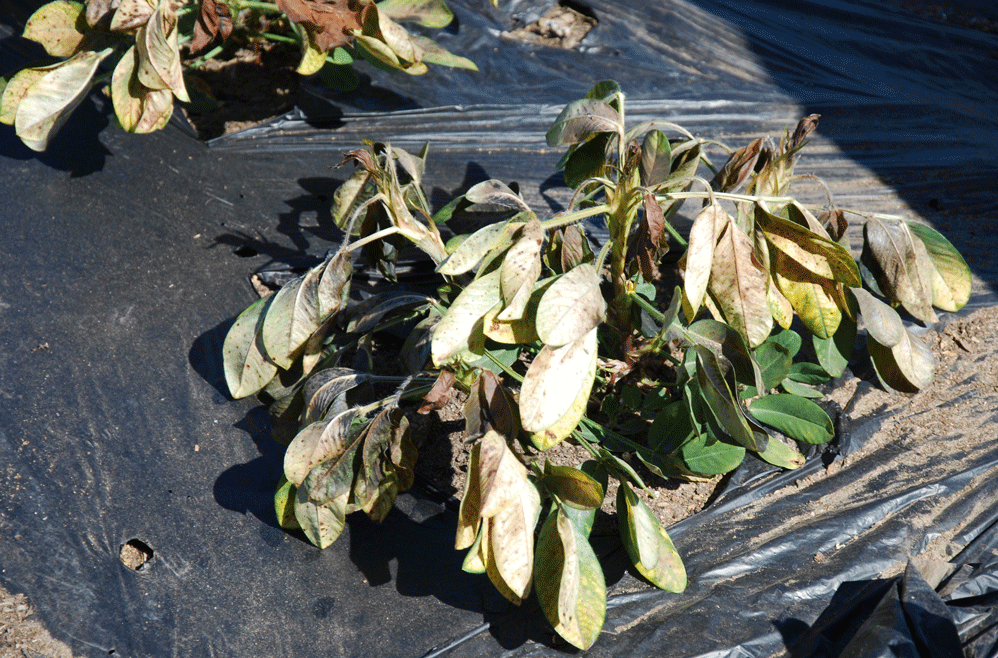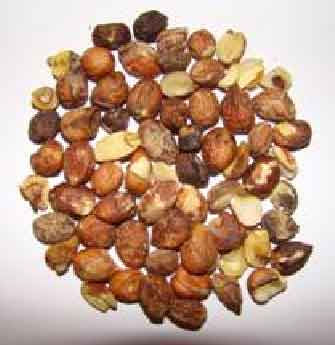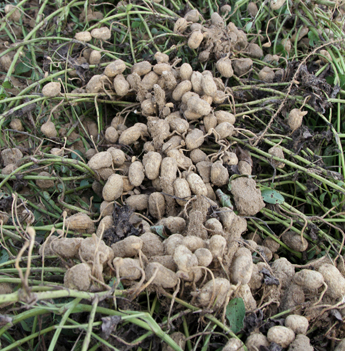Fortunately, in Georgia (especially in Brooks County) we have a low risk index for cold damage during our peanut growing season. However, this season has not been our typical growing season. As you know, many of our peanut acres were later planted due to excessive rains and increased soil moisture conditions. In addition, our dryland peanuts experienced extreme stress due to drought conditions and insect pressure, specifically spider mites. The combination of these factors has delayed the harvest of many acres of peanuts, particularly the dryland peanuts. A number of peanut farmers are waiting on their “second crop” of peanuts to mature, as much as possible, prior to digging. Many dryland growers lost their “first crop” of peanuts due to the various stresses the plant experienced during the growing season. After the initial stress and as growing conditions improved, the peanut plant began pegging again resulting in later pod set. These later set peanuts are the ones many growers are opting to wait on. While we wait for this second crop to gain color and weight we need to be mindful of our soil temperatures and observe the extended forecast. Keeping these environmental conditions in mind, we can manage the harvest of this later peanut crop and decrease the risk of cold damage.
As we approach the middle of November, our cold injury risk will increase. Typically, we anticipate our first frost during this time frame. But, even when we experience our first frost it is usually only a one day event that is followed by an increase in temperatures. This traditional weather pattern allows us to stop or delay harvest but immediately start back in a very short time frame. 
We are most concerned about frost damage as it relates to the pods/kernels. A frost may result in browning of plant leaves or terminals but this is not a problem. Usually peanuts will remain or hold on to the plant for a short period of time (week) even after the plant has experienced a minor leaf kill from a hard frost. Peanuts that are in the ground are generally safe from frost damage. Peanuts are most subject to frost damage immediately after digging. This is due to the fact that the kernel moisture content is high. Freeze damage or injury to kernels devalues the peanuts. Affected kernels may be classified as damaged kernels which results in monetary losses. 
Peanuts that have been dug and been on top of the ground for 2 to 3 days with good drying conditions will be safe during frost conditions. But, if it is cloudy with minimal amount of sunshine and moisture has not dried out, they are subject to frost damage. So, it is to our advantage to monitor the extended forecast and never dig prior to a potential frost. After a frost has moved through the peanuts will no longer be maturing but we can proceed with digging and harvest.
The peanut plant will continue “moving” or progressing the maturity of the peanuts in the ground as long as the soil temperature stays at or above 68 degrees Fahrenheit. The progression of this maturity may be slow but at this soil temperature the peanut can still mature. We usually relate soil temperatures to nighttime air temperatures. As long as our nighttime temperatures stay in the low 50’s and upper 40’s we can hopefully maintain this 68 plus soil temperature. However, once our nighttime temperatures drop to the lower 40’s for three or more days our soil temperature will more than likely fall to 65 degrees or below. At this soil temperature, the plant will shut down and the peanuts will stop maturing. Please refer to the link below for the most up to date soil temperatures and weather data.
https://www.griffin.uga.edu/aemn/cgi-bin/AEMN.pl?site=GADX

